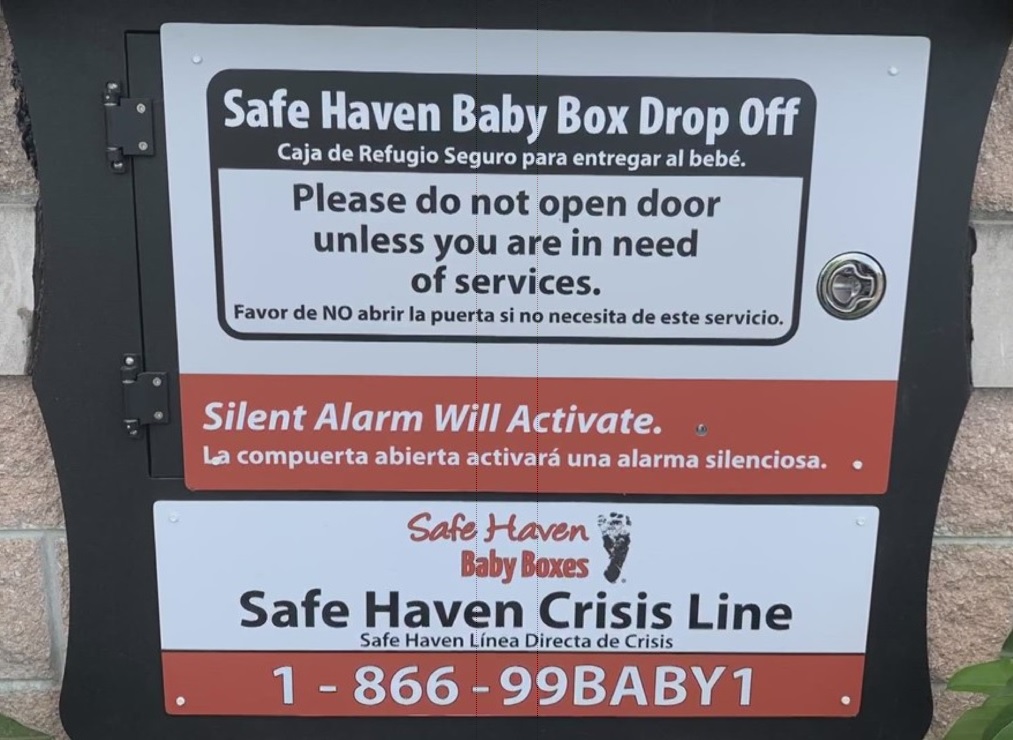“Baby Boxes” Remain a Controversial, if Little-Used
Means of Surrendering a
Child for Adoption
In 2001, New Mexico passed the Safe Haven for Infants Act. This law permits an individual to surrender custody of an baby less than 90 days old to a staff member at a “safe haven site” (which is defined as a hospital, law enforcement agency or fire station) without legal consequences. There is, however, currently no provision under New Mexico law for such surrenders to occur anonymously, such as via utilization of a baby box. A proposal to amend the law to include such a provision last failed in the 2023 regular legislative session, but it continues to be reintroduced by Sen. David M. Gallegos. Nevertheless, an appropriation of $330,000 (a maximum of $10,000 for each of the state’s 33 counties) to “plan, design, construct, equip and install surrender safety devices statewide” was approved by Governor Michelle Lujan Grisham on March 9, 2022, and the installation of baby boxes in various rural New Mexico communities continues, even though the vast majority of these state funds remains undistributed.
The New Mexico Children, Youth and Families Department (CYFD) is legally required, among other things, to ensure that any infant surrendered in accordance with the Safe Haven statute is healthy and uninjured; that the mother is safe and was not coerced into giving up her baby; and to notify the baby’s father—as well as Tribal authorities in the event the child is Native American, in accordance with the requirements of federal law. This includes any child surrendered via an unsanctioned baby box, thereby creating a disparity between the intent of the law and the intent of such devices, i.e., to facilitate anonymity. In the wake of the most recent utilization of an existing baby box in Belen, New Mexico legislators sought in vain in the waning days of the current legislative session to amend the law to limit CYFD’s investigative mandate to only those infants who are injured or show other signs of abuse.
In the decade since the first such legislation was enacted in Texas in 1999 in response to a spate of infant abandonments, versions of a so-called safe-haven law have been passed in every state in the U.S. The laws vary widely in terms of criteria, including who may surrender custody of an infant (“any person” in New Mexico, South Carolina, Maine, Nebraska, Kentucky, or Hawaii, e.g.), the place(s) where an infant may be left or to whom the surrender may be effected (there is wide variation among the states, but most commonly at a hospital or police or fire station), and the maximum age of the child (the highest being one day less than a year in North Dakota).

The first known “baby hatch” in the U.S. was installed in Maricopa County in Arizona in 2001. According Monica Kelsey, founder of Safe Haven Baby Boxes, an independent non-profit organization in Woodburn, Indiana, that facilitates and promotes their use nationwide, baby boxes have been installed in a number of states, including Alabama, Arizona, Arkansas, Florida, Indiana, Iowa, Kentucky, Mississippi, Missouri, New Mexico, Ohio, Oklahoma, Pennsylvania, South Carolina, Tennessee, and West Virginia—even though not all of these states have necessarily legalized use of the devices. To date, a total 41 infants have been left in one of the approximately 200 baby boxes across the U.S., according to Kelsey, who was herself abandoned by her birth mother at a hospital and raised by adoptive parents in Ohio.
Implementation of a means for a child to be safely surrendered anonymously to the care of others is not new, dating at least as far back as the Middle Ages, when churches or nunneries installed barrel-like “foundling wheels” in an exterior wall. A mother could place the infant inside the wheel and ring a bell to alert those inside. The modern version automatically sends a silent alert signal whenever the box is opened.
Needless to say, the practice of surrendering custody of a child anonymously utilizing a baby box is controversial. First and foremost, whatever the means or circumstances, anonymously surrendering custody of a child violates the child’s right to know his/her own identity, as guaranteed by Section 8 of the United Nations Convention on the Rights of the Child. Another obvious problem associated specifically with baby boxes—where there is no face-to-face interaction with an interim caregiver—is the possibility of misuse by people who have no legal or other relationship to the child, or who are acting without the knowledge or consent of the mother. When Nebraska first enacted a safe-haven law in 2008, it contained no age limitation, which resulted in the surrender of children as old as eighteen, some of whom were from out of state. The error was quickly corrected to limit application of the statute to infants 30 days old or younger.
With the recent repeal of Roe v. Wade by the U.S. Supreme Court, it remains to be seen if the number of newborns surrendered under the auspices of safe-haven laws will eventually increase, particularly in states where highly restrictive abortion bans have been enacted or otherwise come into effect. Since abortion remains legal in New Mexico, it seems unlikely that such will be the case here. In any event, Operation Identity stands firmly against any law that facilitates or legalizes the anonymous surrender of children under any circumstances.
Excerpted from the February 2024 edition of the Operation Identity Newsletter
© 2024 Operation Identity